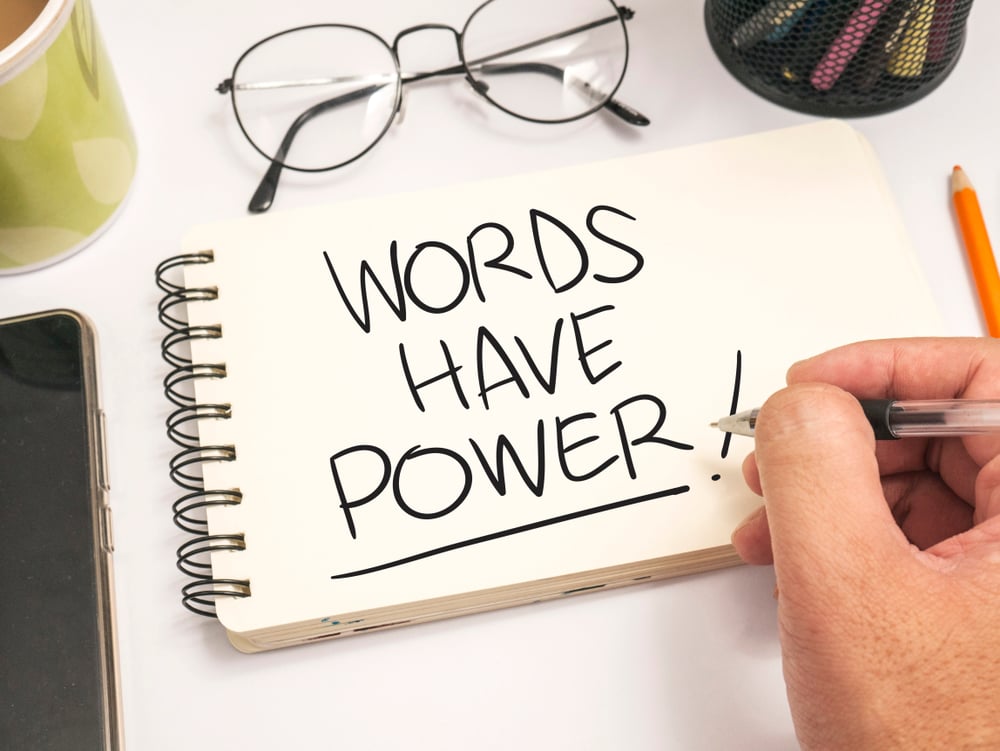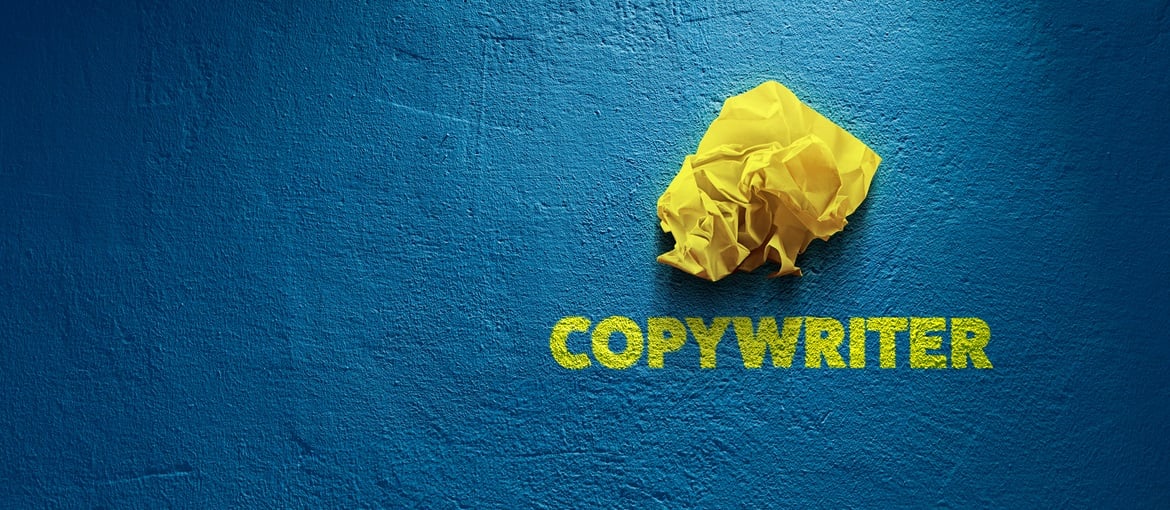Table of Contents
The new challenges facing copywriters
In the world of modern communication, copywriting is the profession with the longest history. It emerged in the late nineteenth century, cemented its position throughout the twentieth century and, despite various challenges and plenty of upheaval, continued to evolve in the first few decades of the new millennium. But the impact of the digital revolution has nevertheless been felt, and copywriters all over the world are now facing a series of seismic changes.
A surprisingly wide variety of texts to write
The proliferation of digital platforms has led to a rediscovery of the written word: demand for content is increasing incessantly, and copywriting – which seemed destined to die out in the 1990s – is now of central importance once again. However, this means that today’s copywriters must be able to handle an endless variety of texts: advertising headlines for online magazines, social network content, newsletters, digital videos, podcast scripts and much more besides.
A change of language from advertising to dialogue
Brands are now communicating all the time, focusing less and less on interrupting content with adverts and instead creating their own content that can be used to build a daily dialogue with the public. This new approach requires a shift in the language copywriters must master, with empathy and the ability to hold online discussions both much more important than they once were.
New digital skills to learn
Digitalisation has also brought with it a plethora of technical knowledge that copywriters need to acquire. They obviously need to understand the dynamics of the social networks for which they intend to develop content, but it is also worth mastering the basics of SEO (Search Engine Optimization) for drafting text that will not be ignored by search engines, and knowing the best methods for writing microcopy to improve a website’s functionality and calls to action that really grab readers’ attention.

The decline of the ‘master copywriter’ and the growing importance of specialist books
These changes have given rise to a clear break with the past. In just a few years, the profession has evolved so rapidly that the traditional method of passing on knowledge from masters of the art to apprentices, which for decades has been the way aspiring copywriters have traditionally learned the ropes and developed professionally, is no longer so relevant.
Suddenly, the world of copywriting seems to have been split in two: on the one hand you have the last generations of professionals nurtured by advertising multinationals, who are experts in coming up with creative messages, but often less accustomed to the constant evolution of digital environments. On the other hand, you have newer professionals who write for digital platforms every day and have myriad technical skills, but often lack strong points of reference and experienced colleagues to reassure them and increase their understanding.
The training process has gradually become more difficult and less certain and natural than it once was, which perhaps in part explains the ever-increasing demand for reliable books that teach the basics of the profession. In the rest of this article I will try to suggest some volumes that I think are useful, productive, simple and nicely laid out. I am certainly not claiming to be able to cover all the subjects that should be found on a modern copywriter’s bookshelf – these are personal choices, deriving from my experience as a copywriter, lecturer and trainer. I will, of course, avoid including any books I wrote myself!
A reading list for modern copywriters
Learning the craft
La creatività in pubblicità, dalla logica alle emozioni
Edited by Marco Lombardi, We Are Social and various authors. FrancoAngeli Editore
This weighty tome, only available in Italian, is used by IULM University in Milan as its main reference for teaching advertising skills. Updated year after year, it contains a detailed section dedicated to the digital world, produced in great detail by We Are Social. The text is dense and not always easy to read, but it provides a solid and authoritative platform on which to base your message. The section dedicated to emotional and rational creative approaches is particularly fascinating.
Everybody Writes: Your Go-To Guide to Creating Ridiculously Good Content
Ann Handley, Wiley
This book, a bestseller in numerous countries around the world, is undoubtedly written by someone who saw the changes coming and was able to describe them before the others, and better too! It sets out to be a clear and exhaustive guide to creating online content of any type, from a webpage to a tweet, with a timeless concept at its heart: that empathy and respect for your audience are universal rules for good writing.
Cose vere scritte bene + Bernbach pubblicitario umanista
Edited by Giuseppe Mazza, FrancoAngeli Editore
These two books, only available in Italian, are apparently dedicated to the history of copywriting. In reality, as editor Giuseppe Mazza, a highly respected professional and lecturer, makes clear, studying the work of master copywriters always provides an extraordinary opportunity to learn something about the present day: discovering the surprising modernity of the ‘show pieces’ contained within these two volumes is also a way to increase your awareness and hone your writing skills, as well as gaining a broader perspective on the shape of the copywriting profession.
Copywriting e scrittura per il web for dummies
Alfonso Cannavacciuolo, Hoepli
This very simple and informative manual, again only available in Italian, provides a good grounding in all the main types of content a copywriter may run up against in the modern world. The clarity of the layout and the simple, direct writing style make it particularly suitable for absolute beginners. It would undoubtedly be an excellent first book to read to start exploring the profession and to put yourself to the test with a few exercises.
2. Storytelling through writing, including for video
Story
Robert McKee, Methuen Publishing
Probably the most comprehensive, passionate and transformative book ever written on the art of telling stories. A bottomless treasure trove of techniques, hints and tips that almost feel like revelations when you read them. This book is impossible not to love, and should be read and reread throughout your life: every single page can provide new intuition, or even the inspiration you need for that video you have to design and write the script for.
The Writer’s Journey
Christopher Vogler, Michael Wiese Productions
The Writer’s Journey began life as a simple handbook for the author’s own personal use, but it soon became one of the key texts for screenwriters all over the world. Christopher Vogler shamelessly borrows the narrative structure he describes from anthropologist Joseph Campbell’s theory on legends, and adapts it for contemporary storytelling on screen. In my opinion this is essential reading for any copywriter who wants to master the basics of storytelling and who has to develop stories for use on screen.
The Hero with A Thousand Faces
Joseph Campbell, New World Library
Why stop at The Writer’s Journey when you can go straight to the source Vogler used for his narrative structure? The Hero with A Thousand Faces is a monumental work, an inexhaustible source of psychological and anthropological discoveries regarding the profound meaning of stories and humans’ innate need to tell them, something we have done since the beginning of time. This extraordinary volume will widen your perspective, whether you are writing the script for a single video or responsible for a more complex storytelling project.
3. Using language creatively
Dizionario analogico della lingua italiana
Zanichelli
This ‘analogue dictionary’, only available in Italian, does not contain definitions, but instead creates conceptual links between words based on their associations. It is a boundless resource for developing your associative and creative thinking, helping you to use language with more awareness and providing a way of training your imagination and creativity: extremely useful, for example, when writing ad headlines and also great inspiration for creating visuals.
Etimologiario
Maria Sebregondi, Quolibet Compagnia Extra
This compact book by Maria Sebregondi, only available in Italian, contains a series of imaginary etymologies: linguistic tricks that are so blatantly made-up that they seem more real and expressive than the truth. Etimologiario is a light-hearted way of discovering how words can be taken apart and put back together, allowing you to go beyond the obvious in search of new expressive potential.
Exercises in Style
Raymond Queneau, One World Classics
Learning how to master the style and tone of voice of a message is still crucial for anyone who wants to enter the copywriting profession. Exercises in Style is a masterpiece: a classic, timeless text that has survived all the revolutions in copywriting. Decade after decade, it remains an essential part of any copywriting library, and contains one of the most important lessons of all: when you write, the how always wins over the what.
Pinocchio in Emojitaliano
Francesca Chiusaroli, Johanna Monti, Federico Sangati. Apice Libri
This book probably isn’t what you were expecting to find in an article like this. Pinocchio in Emojitaliano is the interesting result of research carried out by Francesca Chiusaroli, a lecturer in linguistics at the University of Macerata. It features Carlo Collodi’s classic tale Pinocchio translated into a language made up exclusively of emojis, complete with a grammar guide and dictionary (only available in Italian). Ideal for exploring the expressive potential of images and imagining other ways of using them, given that language is always evolving.
4. Bonus Track
Men and Cartoons + The Wall of the Sky, the Wall of the Eye
Jonathan Lethem, Doubleday Books, Faber & Faber
These collections of Jonathan Lethem’s short stories are not standard entries on a copywriter’s reading list. However, I decided to mention them due to the author’s extraordinary ability to play with changes of style and tones of voice: sci-fi overlaps with sports journalism, an epic superhero tale is mixed with disillusioned and decadent provincial minimalism, and psychological drama blends into a video game. Reading Jonathan Lethm is an ideal way to improve your understanding of style and to immerse yourself in the creative use of language.
This brief foray into the world of fiction ends what is undoubtedly a tentative, brief and certainly not exhaustive collection of books for aspiring copywriters in the modern world. I hope you find them useful.

